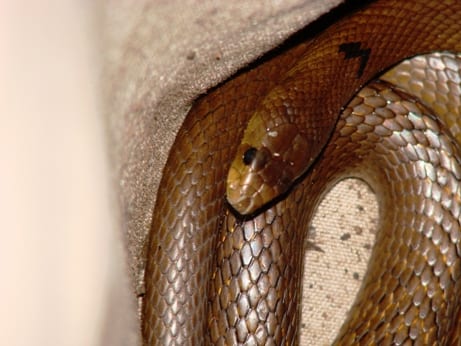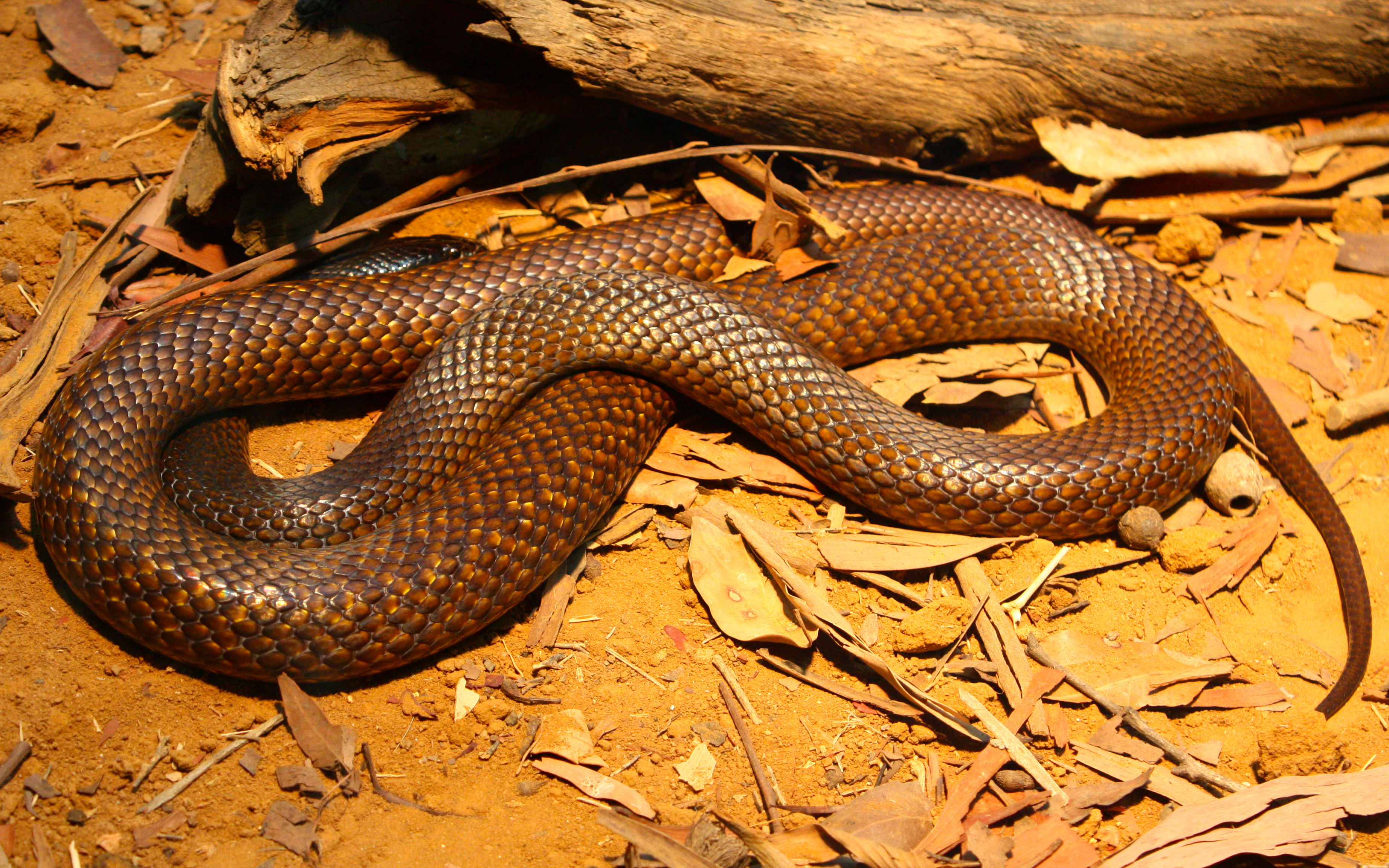Without an inch of doubt, snakes tend to rank high among all that we shall be scared of. For the simple reason that they are among the deadliest and most toxic living beings, snakes have as much beauty of creation as any other animal.
1. The Belcher’s Sea Snake
 Also known as the Faint-banded Snake. This reptile was christened John Edward Gray after the legendary explorer, Sir Edward Belcher. The Belcher is by nature quite and amiable, found mostly in the coastal areas near Philippines. The Belcher snake has a poison, which is around 100 times stronger than the Inland Taipan. However, the snake is not known to deliver a lethal dose every time.
Also known as the Faint-banded Snake. This reptile was christened John Edward Gray after the legendary explorer, Sir Edward Belcher. The Belcher is by nature quite and amiable, found mostly in the coastal areas near Philippines. The Belcher snake has a poison, which is around 100 times stronger than the Inland Taipan. However, the snake is not known to deliver a lethal dose every time.2. The Inland Taipan
 It is by default a local of the deserts of Australia. The snake is known to be docile, and coy, which should be good news, for its default venom is strong enough to deliver a fatal blow to around hundred full grown humans. Venom around four hundred times stronger than that of a Cobra.
It is by default a local of the deserts of Australia. The snake is known to be docile, and coy, which should be good news, for its default venom is strong enough to deliver a fatal blow to around hundred full grown humans. Venom around four hundred times stronger than that of a Cobra.3. The Beaked Sea Snake
 Another big time exploit in world of snakes. This snake is known for its venom and is spotted around the rim of the Persian Gulf up to those of Australia without fail. A dig of this reptile has enough power to kill 10 men. Also this snake is known for biting without aggravation and is to blame for almost half of all sea snake bites and most of the deaths thereafter.
Another big time exploit in world of snakes. This snake is known for its venom and is spotted around the rim of the Persian Gulf up to those of Australia without fail. A dig of this reptile has enough power to kill 10 men. Also this snake is known for biting without aggravation and is to blame for almost half of all sea snake bites and most of the deaths thereafter.4. Krait
 It is known for its venom which happens to be around fifteen times stronger than that of a cobra. There are accidents of people being bitten by this snake when they end up surprising it. Mostly, because the krait may take a shelter in domestic civil areas.
It is known for its venom which happens to be around fifteen times stronger than that of a cobra. There are accidents of people being bitten by this snake when they end up surprising it. Mostly, because the krait may take a shelter in domestic civil areas.5. The Philippine Cobra
 By the very implication of its name is found on Philippines Islands and has a way of flaring its hood. This way of the cobra has given it a special category among snake charmers.
By the very implication of its name is found on Philippines Islands and has a way of flaring its hood. This way of the cobra has given it a special category among snake charmers.6. The Indian King Cobra
 It is simply the largest of the venomous as it can take on a length up to 13 feet in length and gain somewhere around 9 kilograms of weight. Though it does not come with the strongest of venoms, it sure does know the art of pumping a good quantity of its venom into its victim.
It is simply the largest of the venomous as it can take on a length up to 13 feet in length and gain somewhere around 9 kilograms of weight. Though it does not come with the strongest of venoms, it sure does know the art of pumping a good quantity of its venom into its victim.7. Russell’s viper
 A lot many people consider the Russell’s viper as being the most venomous snake in Asia. Its high presence among civil population has made it quite a killer.
A lot many people consider the Russell’s viper as being the most venomous snake in Asia. Its high presence among civil population has made it quite a killer.8. The Black Mamba
 The Black Mamba found in Africa is not a high time man killer because of its nature, but because of the fact that its territory has been invaded by humans and also because it is found in some 14 nations world wide. In fact, besides being a poisonous snake, the black mamba is the fastest snake by all measures, which can reach a speed of around 20 kmph.
The Black Mamba found in Africa is not a high time man killer because of its nature, but because of the fact that its territory has been invaded by humans and also because it is found in some 14 nations world wide. In fact, besides being a poisonous snake, the black mamba is the fastest snake by all measures, which can reach a speed of around 20 kmph.9. The Yellow-Jawed Tommy Goff
 It is also known as the ‘Fer-de-lance’ is locally found in many areas of South America. This snake is reputed for having a very bad nature and severe temperament, which make this snake strike a very high, which is not matched by many snakes. There fangs seek heat patterns, an ability which makes them deadly at night hunts. Be it man, animal or simply fun.
It is also known as the ‘Fer-de-lance’ is locally found in many areas of South America. This snake is reputed for having a very bad nature and severe temperament, which make this snake strike a very high, which is not matched by many snakes. There fangs seek heat patterns, an ability which makes them deadly at night hunts. Be it man, animal or simply fun.10. The Multibanded krait
 It is better known as the Many Banded or Taiwanese Banded krait will be the last mention in our list. The snake is mostly found in the Indian subcontinent. The venom of a multibanded krait is known to paralyze people before killing them.
It is better known as the Many Banded or Taiwanese Banded krait will be the last mention in our list. The snake is mostly found in the Indian subcontinent. The venom of a multibanded krait is known to paralyze people before killing them.











































